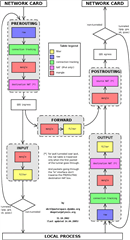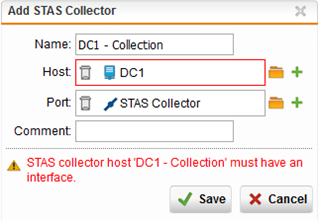Please occasionally check the Changelog at the bottom of this post to see if there have been corrections/additions since you last were here.
Over the years, I've accumulated suggestions from dozens of folks here. I made notes in my personal Tips-n-Tricks list, but it was only in February of this year that I started making a list of the "Rules" we all had established here. I intend to continue to maintain this list, so if you see one that's inaccurate or imprecise, please post in this thread or send me a PM.
The Zeroeth Rule:
Start with a hostname that is a unique (not used for anything else) FQDN resolvable in public DNS to your public IP. If you didn't do that, use slickone27's trick to get CAs, certificates, hostname entries, etc. all aligned; it will save you hours and frustration.
Rule #1:
Always check the logs! For example, when you disabled Intrusion Prevention, you only disabled Snort - you did not disable the items on the other tabs! (Many people are tripped up by UDP Flood Protection which is logged in the Intrusion Prevention log file. This is often the cause of bad voice-quality with VoIP and unreliable IPsec connections that don't terminate on the UTM.)
Whenever something seems strange, always check the Intrusion Prevention, Application Control and Firewall logs. If 'Advanced Threat Protection' on the Dashboard is not zero, check that log also. Hint: If this didn't help, you likely have a routing problem. In that case, check #3 through #5.
Rule #2:
Do you wonder why traffic is allowed through even when you have an explicit firewall rule blocking it? In general, a packet arriving at an interface is handled only by one of the below, in order (see images at the bottom):
- the connection tracker (conntrack) first
- then Country Blocking
- then the 'ICMP' tab in 'Firewall': Traceroute and Ping are regulated on the 'ICMP' tab. The "All" service only includes TCP and UDP - none of the other IP protocols are included.
- then Intrusion Prevention (see the images below to see that IPS actually can happen in several places but happens only once!)
- then DNATs*
- then VPNs
- then Proxies (except the SMTP Proxy in Transparent mode which captures traffic after it has been forwarded by a DNAT)
- then manual Routes and manual Firewall rules, which are considered only if the automatic Routes and rules coming before hadn't already handled the traffic
- and, finally, Application Control.
* A "blackhole DNAT" should be to an IPv4 address in 240.0.0.0/4 or to one in 100::/64 for IPv6.
Rule #2.1:
What happens with outbound traffic?
- The connection tracker takes precedence over any other outbound rules so that response packets always leave from the IP and interface the request arrived on.
- Multipath is applied before SNAT/Masq. Note that the UTM Proxies skip SNAT/Masq and assign a public IP as the source of packets each handles. Unlike with the other UTM Proxies, HTTP/S Proxy traffic can still be identified by Multipath rules as to its private, internal source-IP.
- If you use the 'Optional: Interface for outgoing traffic' in a Web Filtering Profile, that will take precedence over Multipath rules.
- Static/Policy Routes cannot be used with IPsec traffic unless the IPsec Connection is bound to a specific interface.
- Static/Policy Routes are not considered if one of the above applies.
- SNAT takes precedence over Masquerading, so it happens first, causing the packet to not qualify for any masquerading rule.
Before the packet leaves, ATP will block it if the destination is on a list of malicious IPs.
Rule #3:
Never create a Host/Network definition bound to a specific interface. Always leave all definitions with 'Interface: <<Any>>'.
There are two known exceptions
- Beginning with V9.4 and the introduction of STAS (Sophos Transparent Authentication Suite), the definition of the STAS AD domain controller Host must be bound to the interface for the subnet containing the DC. Note that you will need an additional Host definition with 'Interface: <<Any>>' if you want to make a firewall rule for the DC.
- An advanced use of Uplink Monitoring can affect how Uplink Balancing functions when monitoring hosts are specified: "If a selected host is bound to an interface, it will only be used to monitor this interface."
Rule #3.1: Other solutions to routing problems (not seeing any blocks, but not getting responses) include:
- Devices in the LAN must have the IP of "Internal (Address)" as their default gateway.
- Never connect two NICs into the same, physical Ethernet segment unless bridging or creating a LAG.
- When adding an interface, don't forget the Masquerading rule for the new network behind the UTM.
Rule #4:
When creating DNATs for traffic arriving from the internet, in "Going to:" always use the "(Address)" object created by WebAdmin when the interface or the Additional Address was defined. For any Traffic Selector to apply to packets with a destination of an IP on the UTM, the corresponding "(Address)" object must be used. Under the covers, it's iptables that does the work. Using "Any" or a normal Network/Host definition causes the Traffic Selector to apply to packets in the FORWARD chain. The "(Address)" objects are bound to the interface on which they're defined, so that causes the Selector to apply to the INPUT chain.
Rule #5:
In NAT rules, it is a good habit to leave a field blank when not making a change. In the case of a service with a single destination port, this makes no difference. In the case of a service with multiple ports, or a Group, repeating the service makes the NAT rule ineffective.
Rule #6:
There are only six reasons to sync users from AD to the ASG/UTM:
- The user is to be added to 'Allowed Administrators' or given a 'Role' on the 'Access Control' tab in 'WebAdmin Settings'.
- The user needs access to the User Portal.
- The user should be able to log on to a Remote Access VPN that uses certificates to authenticate the user.
- Email Protection is enabled and the user should receive Quarantine Reports and be able to manage personal black/whitelists.
- You want to do Reporting by Department for Web Protection (please vote for and comment on Reporting: AD/eDir Backend Group "Departments").
- You want to use the Authentication Agent to populate "username (User Network)" objects.
There's no other reason to sync users to WebAdmin - certainly not for AD-SSO.
Rule #7:
If you have slow throughput and/or ifconfig shows errors, collisions, etc., try these steps, in sequence, until your problem goes away:
- If you have a Realtek, Marvel or 3Com NIC, skip to the last step.
- Confirm that 'Interfaces & Routing >> Quality of Service (QoS)' is not limiting bandwidth. Also confirm that 'TCP window scaling' is enabled on the 'Advanced' tab of 'Network Protection >> Firewall'.
- Edit the interface definition, and, in the 'Advanced' section, set the MTU to 1350. If that works, check with your ISP to help find the largest setting that works. If this doesn't work, set the MTU back to its original value.
- Change the Ethernet cable.
- If connected to a switch, change the switch port.
- If connected to a router or modem, change that device.
- On the 'Hardware' tab in 'Interfaces & Routing >> Interfaces', experiment with different settings of fixed speeds and duplex. Make the same settings on the router/switch/modem to which the interface connects. Before testing the change, reboot both devices to force them to renegotiate their connection.
- Move the interface definition to another eth on the UTM or replace the NIC with an identical one. If you have a Realtek, Marvel or 3Com NIC, you should replace the NIC with an Intel (NOT an Intel 82574 based NIC due to bugs from Intel that aren't fixed - the 210 series is good). Note that if you don't already have an Intel NIC, you will need to reload from ISO in order to install the driver for the new NIC
Rule #8:
Before changing the hardware the UTM runs on, go to 'Interfaces & Routing >> Interfaces' and, on the 'Hardware' tab, edit each NIC to have a 'Virtual MAC Address' that copies the existing MAC. This will cause your new NICs to be recognized immediately after the configuration is restored. The alternative is to make certain that each router/switch connected to the various NICs has cleared its ARP table:
- When changing UTM hardware or NICs, Always power-cycle any cable modems or other devices that lock MAC addresses.
- Some ISPs (FiOS) require calling ISP to break the lease, unless one does it manually (from the UTM console) when switching UTM hardware
Rule #9:
When a Web Filtering Filter Action changes based on Policies with Time Events, established connections like YouTube will continue to function and will not be blocked. Use Sheldon's Trick: create a firewall Block rule for a one-minute Time Event after your policy allowing traffic is deactivated by a Time Event and one blocking traffic then handles the requests.
Cheers - Bob

Changelog: 2021-02-16 Expanded #2.1 based on a question posed by usec-dz; 2020-11-12 Based on a comment by Shaun Raven , I clarified the warning about SMTP Transparent in #2. 2019-04-17 Added the information about ATP to #2.1 after stu asked a question about it; 2019-01-02 Added exception for Uplink Balancing to #3 as suggested by Toni LuCar; 2018-12-30 Deleted reference to encryption/signing from Toni LuCar; #6 based on a comment from2018-12-28 Added #2.1 based on a question from member Davis Admin; 2018-01-03 Added a line to #3 based on a post by shaun threetwotwosix; 2017-12-27 apijnappels posted this suggestion for the * on #2.5; 2017-12-09 In #2, inserted #3 about ICMP; 2017-06-09 Replaced the flow diagram mentioned in #2 with a newer version and then put the old one back along with an older iptables version, too; 2017-05-30 In #2, - moved DNATs from #3 to #4 (after Intrusion Prevention) - I think that's right; 2017-05-20 Added the question at the top of #2 based on a suggestion from Louis-M; 2017-04-02 Reformatted #2 based on an idea from Louis-M; 2017-02-16 Changed #1 because people were ignoring notes and parenthetical remarks. Two people today ignored my notes and -omments, turned off IPS and thought they were following the rule!; 2017-01-25 added Intrusion Prevention to #2; 2017-01-16 added parenthetical remark in #3.1 based on a comment by new member Brendan Corcoran; 2016-12-08 added #9; 2016-12-03 added by a new member; iptables information to #4 because of a question asked by new member Len Goddard; 2016-10-22 added comments to the end of NOTE on #1 and updated #3 with the exception noted by vilic in March; 2016-10-18 added NOTE to #1; 2016-05-06 added the parenthetical remark about the Transparent-mode SMTP Proxy -to #2 thanks to a report by fellow member Matthew; 2015-10-05 added hint to #1; 2015-09-25 typo; 2015-08-13 Changed #7 to numbering instead of bullet points; 2015-07-10 Bart van Kampen's tests proved that AppCtrl comes after firewall rules, so -#2 was modified; 2015-06-19 Thanks to new member jleigh5, added second line to #6 about User Portal; 2015-06-14 "unique..." added to 0-eth rule; 2015-06-11 added details on Intel NICs based on a comment from William; 2015-06-07 changed the link in #0 to work with Macs; 2015-05-25 added the first reason in #6 about WebAdmin; 2015-04-10 added link to feature request in #6; 2015-03-15 clearer wording in Zeroeth; 2015-02-03 #8 thanks to BarryG and AppCtrl in #2 thanks to FrankBarmentlo; 2014-12-24 added Country Blocking in #2; 2014-09-10 added conntrack in #2; 2014-09-09 added Advanced Threat in #1; 2013-06-10 added BarryG's masq idea in 3.1; 2013-06-08 added fourth reason to #6
See Changelog.
[edited by: BAlfson at 10:27 PM (GMT -8) on 16 Feb 2021]


